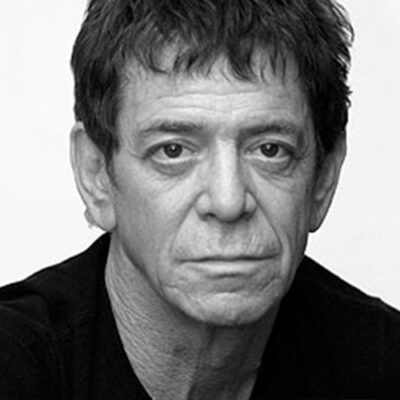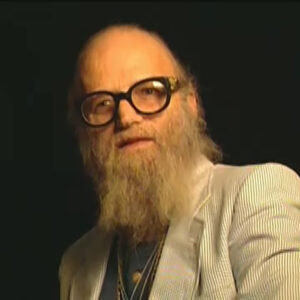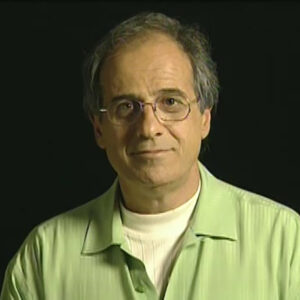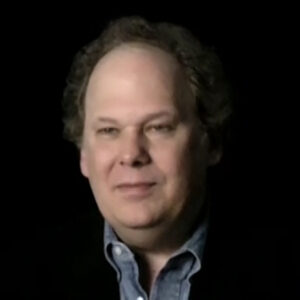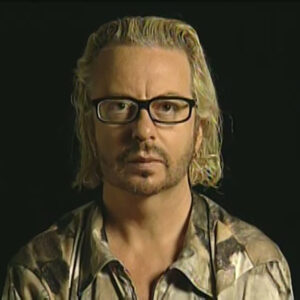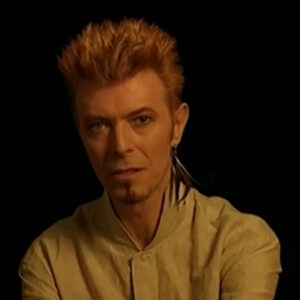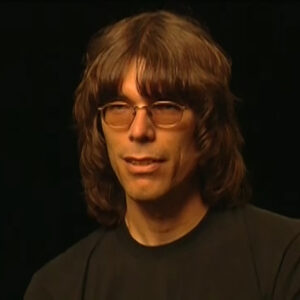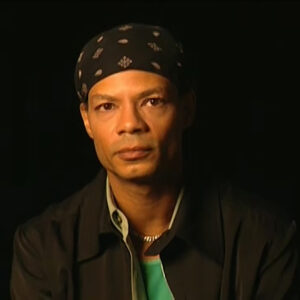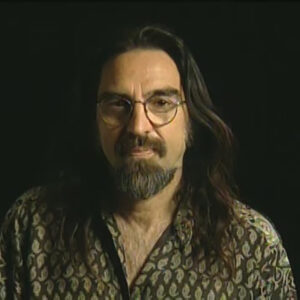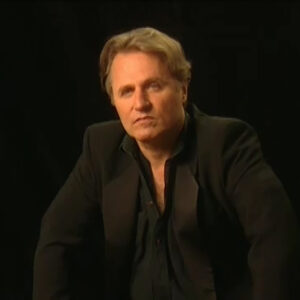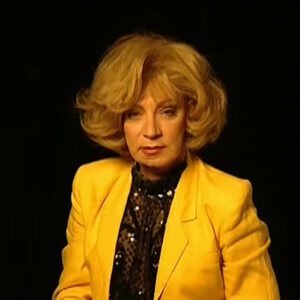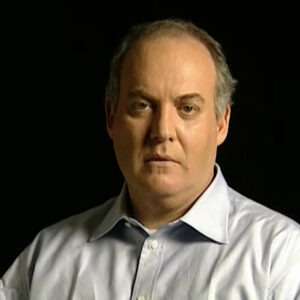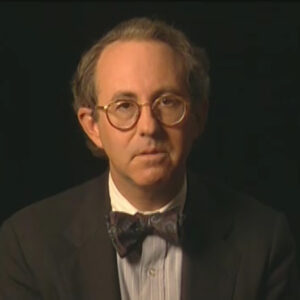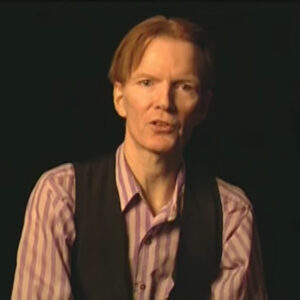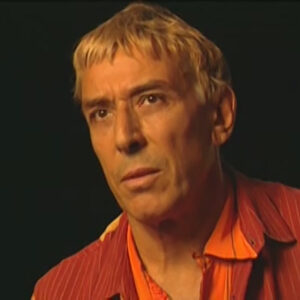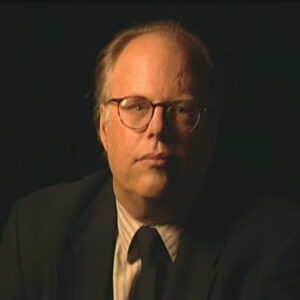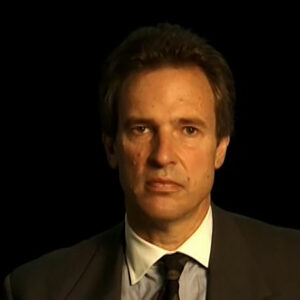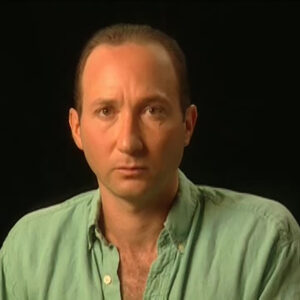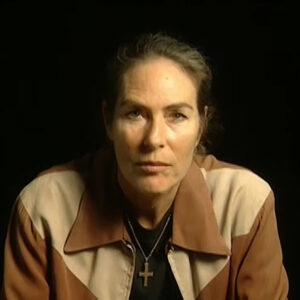Speaker You know, I was a senior in high school. I was 17 and was interested in in both photography and filmmaking and made a film, a short film that was shown at a place called Filmmakers Cinematheque the same night as one of Andy’s films, The Life of Wendy de Castro, and met him afterwards. And this was in 1965. He already was well-known in the New York art world. And I knew interesting things were happening around him. And I said, Can I come and photograph? And he said, Sure. He said that he’s going to Paris. And he’ll call me in a month. And I didn’t know if I’d ever hear from him again. And sure enough, a month later, I got a call on the phone. Hi, it’s Andy. He was filming at a restaurant called Love and Toura, and he invited me to come and essentially photograph there for a three year period from then on. Not every day. I was there for about perhaps a year or maybe a little less every day. And then we’d come back when something new happened, like the Velvets came.
Speaker They were they were broad, I believe, by Barbara Rubin, who I was friendly with, who is a very, very energetic, interesting woman to start over again. The Velvets were brought to the factory by Barbara Rubin, who was a very energetic and interesting woman and was a friend of mine. And I went there, went back to the factory and started and started photographing there again. I also became involved in the lighting for their stage show at the exploding plastic inevitable. And it was a lot of fun to do. It was there was an atmosphere of being able to experiment and have fun with things in a collaborative venture where no one’s name and reputation was on the line. And that kind of gave her freedom to play around.
Speaker And tell me about taking pictures there. What was the atmosphere like? It’s nighttime all the time.
Speaker I would usually go to the factory in late afternoon and most everything happened in the evening once once the once they started performing at the DOM, that was a very set schedule. And so it would be every night. And that was different from the earlier days, the factory where people would just begin accruing over a period of a couple of hours and late afternoon. Something built up.
Speaker And Andy stopped working and we went out and did something and they would actually rehearse at the factory.
Speaker There were some rehearsals. The factory and some filming of them at the factory.
Speaker I’ve seen some footage. Lisa, do you remember that the police arrived because neighbors have complained about the noise?
Speaker They were.
Speaker Andy was filming them and they were allowed.
Speaker Nico. Nico.
Speaker Well.
Speaker The thing I when this my songs members and Nico was an evening at my parents apartment where I was still living when my mother befriended her and they sat in the kitchen.
Speaker That’s a great story. You. Yeah. This.
Speaker OK, so let’s talk about your mother. Yes. Party at your house.
Speaker Yes. I was living with my parents and and I had I would often have parties at my house. And at one party, my my mother befriended Nico and sat in the kitchen giving her milk. And Motss and Nico told my mother her life story and spent hours there.
Speaker And it’s amazing. Here you are, 17, 18 years old, and you have the Velvet Underground at your house, your parents house. And that is very amazing group. You know how that comes about.
Speaker You just like I would I would invite them over and sometimes we wouldn’t usually be spontaneous. I’d have a party. And I lived in a building with the doorman and would often have. They would want a guest list because these were often people they weren’t used to seeing or the type of person they weren’t used to seeing. Want to make sure everyone was OK. My parents were extraordinarily tolerant. And what they decided to do was take sleeping pills and close their door and go to sleep. And they’d get up in the morning and there would be an occasional body or two lying around and my mother would make them breakfast.
Speaker And one of my favorite incidents was one of those mornings. There was a friend of mine named Ed Hennesy, who was from the Cambridge crowd who who were hanging out at the factory, I guess, before the Velvets, Friends of Friends of Edie Sedgwick and my mother insisted on giving everyone oatmeal.
Speaker And after a night of partying, this was not what what we wanted. And and Ed, when my mother wasn’t looking, scoop the oatmeal out of the bowl and put it into his blazer pocket. And my mother was thought, oh, you’ve loved my otan. He also insisted. Sacrificing a blazer for civility.
Speaker Can we talk about these particular pictures like your parents reinsure our living room? He’s just sort of lounging there with his leg up over the chair, sunglasses at night.
Speaker I really don’t even remember taking that wasn’t although I would assume that’s not at a party.
Speaker This is just somehow an hour round. We stopped by their.
Speaker So you might be out in that crowd and stop at your house on your way somewhere else?
Speaker Yeah, that’s what occasionally happens. Once in a while we’d be out and we’d stop at my house on the way to someplace else.
Speaker And you had your camera? Yes. You talked about how you your style without flash.
Speaker Yes. Oh, all the work I was doing was without flash, all 35 millimeter hand-held. I’d already been doing photography for a while. I started doing darkroom work when I was six. And so I was I had had a lot of experience even by then. And but one of the interesting things for me coming out of this experience, photographing Andy, was that although I had been doing photography a long time, I don’t really think I ever thought aesthetically and being exposed to to Andy and seeing the decisions he made, it wasn’t particularly anything he said to me. He wasn’t giving me words of wisdom, but just watching him make the decisions he needed to make in his work. I began to understand the aesthetic thinking in a way I had never had before.
Speaker And let’s go back to develop, period. Talk about the music that you were hearing. Did you like it?
Speaker Oh, yeah. It had just so much energy.
Speaker And it was.
Speaker It was dark and energetic and exciting.
Speaker And who were some of the people that came around? Other musicians that Bob Dylan was there?
Speaker I never met him at any particular thing. You want to talk about it just like you’ve traveled with them as they are in New Jersey. Did you go out with exploding?
Speaker I went out with the exploding plastic inevitable a few times. I didn’t make any any big trips with them. We went to New Jersey once.
Speaker They were trying to think if they ever performed a la club or may have just been Jarraud performing at LA Club.
Speaker I don’t remember, but I didn’t regularly travel with them. I’m not even sure that they did.
Speaker What was that experience like? What was that concert like? You never saw the first light shows. It used the word.
Speaker Yeah. The exploding plastic inevitable.
Speaker I was one of a couple of people who who did the lighting and I didn’t really know what I was doing particularly and was just standing behind a light and and aiming at different places and changing the color and just fooling around, really.
Speaker But at the time, that was incredibly unusual, I think. I mean, there were light shows and rock bands.
Speaker I’m not sure. I think there may be may have been some some of the San Francisco bands may have had some light shows. Nothing as elaborate as that exploding plastic inevitable where there would be movies projected on the side. This was an interesting use of some of Andy’s early films like Eat or Sleep, which are more interesting as concepts perhaps than as movies to actually sit and watch. And they had a very good. They had a very good use there as a kind of backdrop where I really they were often at the side of this slowly evolving image going on.
Speaker Can you talk about the idea? For me, it’s so interesting that Andy left fine art painting and want to be a rock promoter.
Speaker I wanted to be, you know, went off to do something totally different. It left a very moving career as a painter and then went off to go out with his band and tour in buses to college and say, well, Andy was interested in a lot of other things when I when I first arrived.
Speaker While he still did paintings. He was doing flower paintings and made while I was there, made cow wallpaper and Mylar pillows. His main activity was his filmmaking. He was doing films every week. And so his interests were much broader than just than just painting. And so it didn’t seem that unusual that he would branch out into other things.
Speaker There’s one incident that that is I don’t know if this or to make it up, but it’s fun. He wanted to get my father to invest in the exploding plastic inevitable. And so he gave my father the books that were kept. And my father came to me one day after studying them and said, you have to see this. This is amazing. At the end of each day, there was an entry this there cab fare, the meals they had at the end of each day with the entry.
Speaker Ten dollars for each for Johns to make sure your father didn’t invest. He didn’t anything care that I need to forget.
Speaker Oh, yeah.
Speaker I just I was not aware of that, you know?
Speaker Well, there are two parts to the idea of how significant this moment was, both for me personally and did I realize what they were was what they were doing significant for me? This is kind of what I did during my what would have been my college years. This was a lot more interesting than any school I’d ever gone to. And it was it became impossible for me to to continue in school being exposed to to this. It was just it got. It took my attention. And this is why I wanted to be every day. And but I see a lot of people there for whom this period of their life is a source of of of memories that are very important. And for some people, it was I was college for people of my parents’ generation was often the Second World War for me.
Speaker Who was the factory in terms of their significance?
Speaker I had I had no idea. I didn’t even think in those terms. I wasn’t dismissing them. I thought it was great.
Speaker But now it’s 30 years later. And I teach at Bard College and I have 18 year old students who see pictures of Lou, and they all know him. And he is for it for a band who who lasted such a short time and produced so few albums have had an extraordinary influence.
Speaker About two things here.
Speaker First, what was it like, as if it’s harder for being there? Were you obtrusive? Were you just ignored?
Speaker The 17 year old kid never thought about it or talked about that also, maybe.
Speaker Well, I think I had a funny position as a photographer in that I first came there as an observer, but then became friends with everyone. And so people ignored me or people mugged for me or performed for me. But they were doing it more for a friend than than than for an outside photographer, a building name as a person I became friendly with right away. And he was living at the factory and was photographing also at that time. And we became good friends. We both had an interest in an opera and he supplied the background music to the factory.
Speaker There’s often competition between photographers here, too. Tiger is in one small place that never was a problem.
Speaker No, there wasn’t. There was never any competition between me and Billy name.
Speaker And then let’s talk about this picture, the one with dissident’s pullback of Sterling and Andy and Julie, Garfield and Barzini, and then maybe winning for this close up. If you remember anything about where we were, what time.
Speaker I wish I. I don’t really remember much about it. Benedetta Barzini was a friend of Gerard Malingers and she was there for a period. And this was just one of many days where people were hanging around.
Speaker And then he went in for a close up.
Speaker Yeah. I just continued to work on the scene and and did did a close up.
Speaker I had a personal question, which was what was the lighting like?
Speaker No, the lights. The lights were bare bulbs. The lighting was terrible. Speaking as a photographer and as someone who couple of years ago had to go through all these negatives and make new prints, it was very glary. Bare bulbs and silver walls.
Speaker But in a way that might sort of it sort of creates a look that no one else can get because no one would dare have silver wallpaper and bare bulbs anymore. So in a sense, does that isolate these pictures for you?
Speaker It’s hard for me to separate the the physical reality of the place from my memories of it. And I think it’s all and maybe all part of the same picture. I was also very interested in the way Andy related to other people when he was working. There’s some people who like to work alone and want privacy and other people who seemed to draw energy off of people around them. And I think Andy was the latter. And he often would ask people to ask them questions that I don’t really think he cared what their answer was, but I would ask them the question to keep them focused on his activity. And I think he liked having the people hanging around and would every now and then put up a sign, don’t come into the factory unless you have business here. But then he never enforce it.
Speaker So we’re always there and, you know, was just a place to start.
Speaker There were not a lot of parties there. I like. I remember maybe two or three big parties.
Speaker Well, with the activity after that goes.
Speaker We’d go out to. He was invited a lot of places. He’d always he’d always arrive with group of people. This was expected of him when people invited him. We did that once, once the once the exploding plastic inevitable started the. As I mentioned before, the the activity was much more focused. And we were we had a schedule. And did that and then often went out to do trying to town or a little Italy for dinner afterwards.
Speaker You know, I always think of Nico as one of the first supermodels that she was. Can you talk about her as someone you photograph with every angle? Was she ever ugly? What was it like?
Speaker I don’t really remember, but I haven’t seen any pictures of her where she.
Speaker And etcetera, etcetera.
Speaker This was fascinating person to photograph. And as I was editing, editing my book, I found that it was pictures of E.T. that I became the most interested in. And how different she looked and how vulnerable she looked. I thought she was just a fascinating person.
Speaker Isn’t it strictly funny moment here in the book where she talks to somebody, Jackie, in a limousine and they just picked her up and she’s bought shoes. And she says, I think the most fantastic shoes, I just love these shoes. And she gets the shoes. And then she looks at them again.
Speaker She says she rolls the window down through the car. Is that can you talk about that? I was never in that kind of situation.
Speaker Anybody else? Question.
Speaker Well, Director. But I suspect you get that same in that starting with Andy Warhol.
Speaker I think Andy Warhol had had a very clear idea of what he wanted, but it was interesting. He was he also had a kind of innocence about him, which was would would seem surprising. I remember once we were coming going uptown late at night. I was the only person in the group who lived uptown. He lived further north than I did. And so he’d leave me off sometimes. And we had to talk about the time he was shooting Chelsea Girls. And we were talking about why he made the decision t to have two screens at once and said that. So I don’t know how to edit films and I don’t want my audiences to be bored. So I thought if I had two screens at once, they’d be less bored.
Speaker I have two questions.
Speaker The first one, I forgot the sexualizes the screen, by the way, which is interesting in light of all the theory about the boredom of zero, your films.
Speaker Exactly. Were you there when they were doing all this? I think they like 600 screens or something.
Speaker There are hundreds of them anywhere. Order.
Speaker They’re couple of minutes. Were you there during some of those? It like straight talk about that process? I’m so interested in those sort of people sitting there looking at the camera.
Speaker Yeah. I photographed a few of the screen tests that Andy that Andy did.
Speaker I.
Speaker I don’t really, really remember much about them. I remember them from my photographs more. What was it like? I was sitting with someone, would sit in a chair and he turned the camera on and have a small roll of film in it and just run the roll and didn’t give them any direction. Not that I’m not that I recall a lot. I yeah, I don’t I don’t recall Andy giving giving the models any direction in the films he was doing at the time. The director or the producer, I don’t remember exactly what Tidally had was chuck wine, and what Chuck would do is essentially create a situation and and pick interesting people and put them in either literal or conceptual situation and and have them improvise. And so there wasn’t not a lot of direction going on with the screen tests and with the other movies being done.

